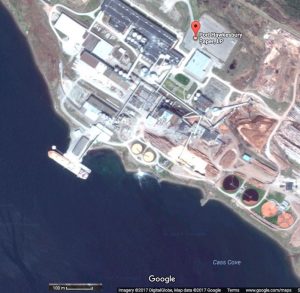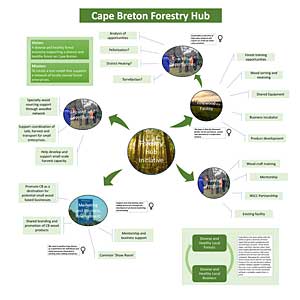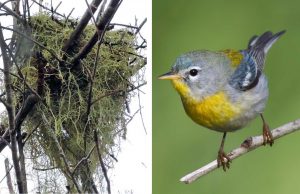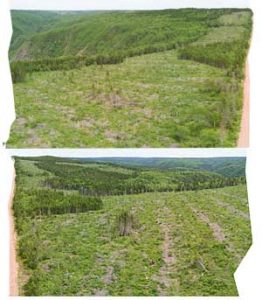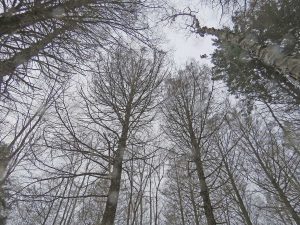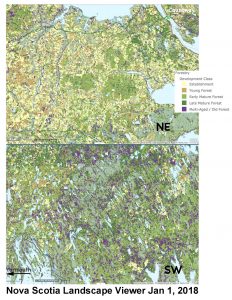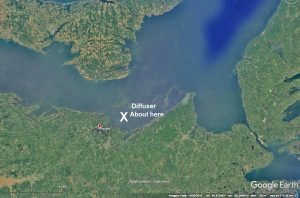
The diffuser for the new treatment system would be about here
Click on image to enlarge (from Google Earth)
Fishers are concerned about impacts on lobster, crab, scallop, herring, and mackerel fisheries, but the big question is apparently who will pay for the new system, not whether a closed loop system should be required.
UPDATE Jan 20, 2018: COMMENTARY: Pulp mill’s dark side gets short shrift by Joan Baxter in Chronicle Herald, Jan 19, 2018.
Last Saturday morning (Jan. 13), I picked up the The Chronicle Herald to see a front-page spread announcing the launch of a special report on the Northern Pulp mill in Pictou County, about which I had just written a book, “The Mill —Fifty Years of Pulp and Protest.”
To date, there have been four articles in the series. It has certainly provided lots of positive coverage of the mill. Missing, however, are the voices of the people with concerns about the mill, and many facts that still deserve attention.
She goes on to elaborate and concludes “…here’s hoping another series on Northern Pulp is in the works, one that will bring us the voices of people with a broad range of concerns about the pulp mill’s effects on water, air, forests, tourism, fisheries — and also politics in this province.”
Joan cites a CH item I had missed, the Jan 13 item The inner workings of the Northern Pulp kraft mill, introduced with an editors note: “Northern Pulp plans over the next two years to replace the effluent treatment facility at Boat Harbour with a land-based facility to treat wastewater before it is piped into the Northumberland Strait. This week, journalists with The Chronicle Herald and New Glasgow’s The News toured the Northern Pulp facility, spoke with the people who run it and with some of those who have concerns about the company’s plan.”
UPDATE JAN 16, 2018: Forwarded from Linda Pannozzo: A closed-loop bleach kraft pulp mill IS possible. View CLOSED-CYCLE BLEACH KRAFT PULP PRODUCTION
Also see Dirty Dealing: Northern Pulp Mill and the province are set to roll the dice with Boat Harbour’s replacement, but a cleaner alternative exists by Linda Pannozzo in the Halifax Examiner, Nov 22, 2017. Comprehensive examination of the options for managing the effluent from the Northern Pulp mill.
———————————
The original post (Jan 15, 2018):
After a short Christmas respite from controversy surrounding The Mill in Pictou, it seems we are approaching a fork in the road and choices about which way to go will soon have to be made, with the province/the Liberals on the hook one way or the other.
The Mill is going full steam ahead with its new waste system, evidently on the assumption that the EA (Environmental Assessment) that it must eventually pass will give it the stamp of approval or require only modifications, but not reject it or require a closed-loop treatment system. View After years of controversy, Northern Pulp is cleaning up its act* by Sam Macdonald for the Chronicle Herald, January 14, 2018
Also: Bleached Kraft Mills cannot be Closed Loop
“Sponsored Content” in the Chronicle Herald, no date
__________________________________________
*Title later changed to “Here’s how Northern Pulp says its effluent treatment plan would work”
Continue reading →


